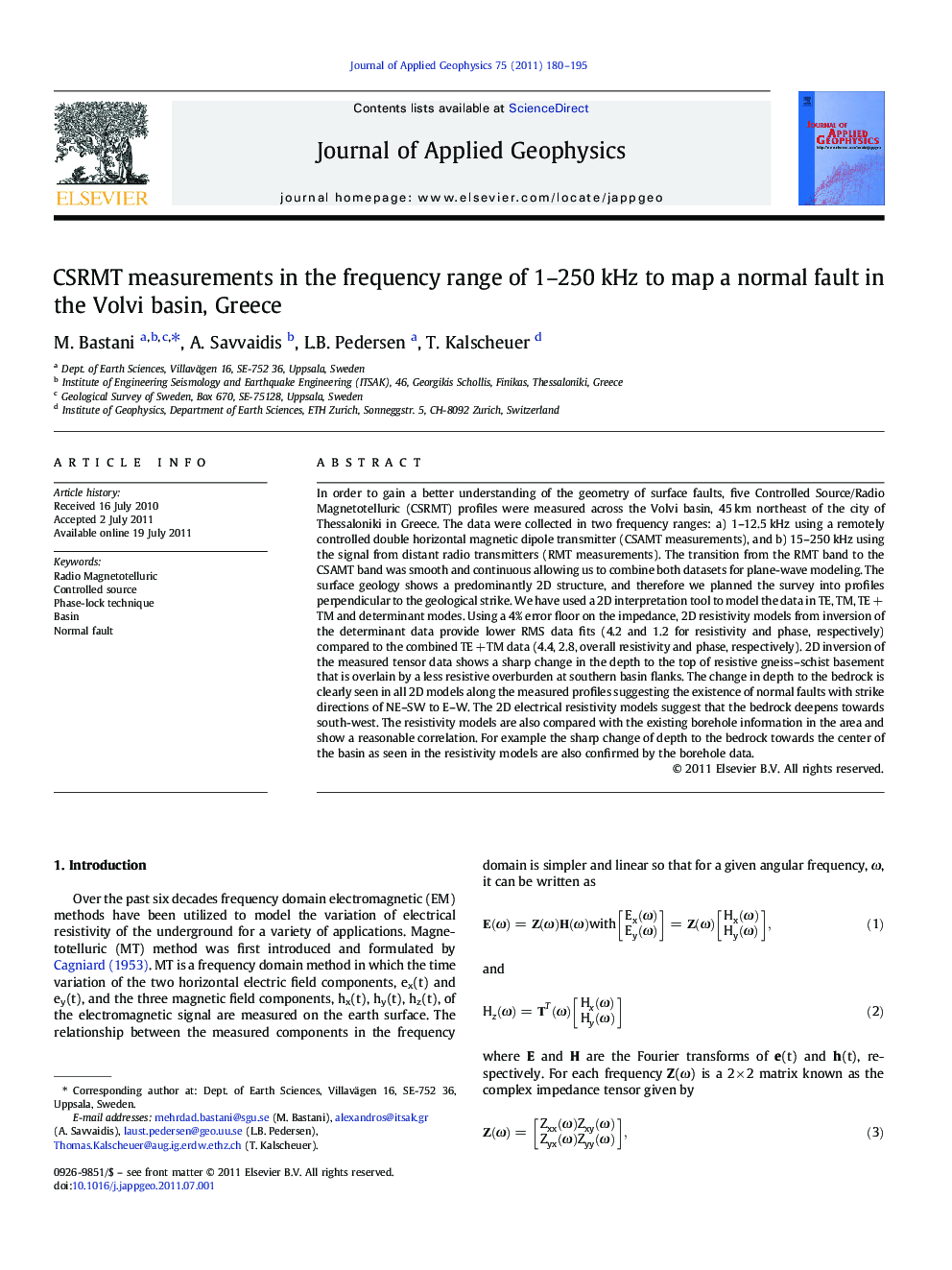| کد مقاله | کد نشریه | سال انتشار | مقاله انگلیسی | نسخه تمام متن |
|---|---|---|---|---|
| 4740607 | 1358594 | 2011 | 16 صفحه PDF | دانلود رایگان |

In order to gain a better understanding of the geometry of surface faults, five Controlled Source/Radio Magnetotelluric (CSRMT) profiles were measured across the Volvi basin, 45 km northeast of the city of Thessaloniki in Greece. The data were collected in two frequency ranges: a) 1–12.5 kHz using a remotely controlled double horizontal magnetic dipole transmitter (CSAMT measurements), and b) 15–250 kHz using the signal from distant radio transmitters (RMT measurements). The transition from the RMT band to the CSAMT band was smooth and continuous allowing us to combine both datasets for plane-wave modeling. The surface geology shows a predominantly 2D structure, and therefore we planned the survey into profiles perpendicular to the geological strike. We have used a 2D interpretation tool to model the data in TE, TM, TE + TM and determinant modes. Using a 4% error floor on the impedance, 2D resistivity models from inversion of the determinant data provide lower RMS data fits (4.2 and 1.2 for resistivity and phase, respectively) compared to the combined TE + TM data (4.4, 2.8, overall resistivity and phase, respectively). 2D inversion of the measured tensor data shows a sharp change in the depth to the top of resistive gneiss–schist basement that is overlain by a less resistive overburden at southern basin flanks. The change in depth to the bedrock is clearly seen in all 2D models along the measured profiles suggesting the existence of normal faults with strike directions of NE–SW to E–W. The 2D electrical resistivity models suggest that the bedrock deepens towards south-west. The resistivity models are also compared with the existing borehole information in the area and show a reasonable correlation. For example the sharp change of depth to the bedrock towards the center of the basin as seen in the resistivity models are also confirmed by the borehole data.
► We study electrical resistivity of shallower parts of a sedimentary basin in Greece.
► The goal is to model a normal fault that probably caused a large recent earthquake.
► The methods used are RMT and CSAMT (CSRMT) in the frequency range of 1–250 kHz.
► A remotely controlled double dipole magnetic source provided signal in the CSAMT.
► We make a dimensionality analysis and model overburden thickness and the fault trace.
Journal: Journal of Applied Geophysics - Volume 75, Issue 2, October 2011, Pages 180–195